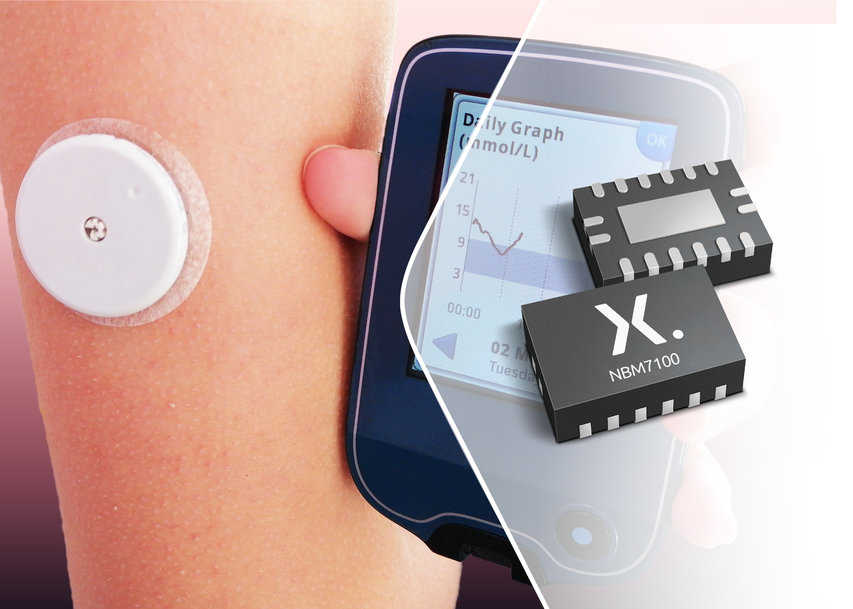www.electronics-usa.com
12
'23
Written on Modified on
Nexperia News
Nexperia unveils the industry’s first coin cell battery life and power booster
Nexperia has just introduced the NBM7100 and NBM5100 which delivers up to 10x battery life and range extension in IoT devices.

Nexperia, the expert in essential semiconductors, has just introduced the NBM7100 and NBM5100, revolutionary new types of battery life boosting ICs designed to extend the life of a typical non-rechargeable lithium coin cell battery by up to 10x compared to competing solutions while also increasing its peak output current capability by up to 25x compared to what a typical coin cell can deliver without a battery booster. This unrivalled extension in working life will significantly reduce the amount of battery waste in low-power Internet of Things (IoT) and other portable applications while making coin cells a viable power source for applications which could previously only operate from AA- or AAA- batteries.
“Introducing this battery life booster product signals Nexperia’s further expansion into battery management solutions,” according to Dan Jensen, General Manager of Nexperia’s BG Analog and Logic ICs. “We are excited to unveil these innovative products complementary to our existing analog and logic products. The NBM7100 and NBM5100 significantly enhance coin cell performance which helps to help reduce battery waste in IoT, wearables and other consumer applications.”
CR2032 and CR2025 Lithium coin cells have higher energy density and longer shelf life. As a result, they are commonly used in low-power applications, including devices with Low Power Wi-Fi, LoRa, Sigfox, Zigbee, LTE-M1, and NB-IoT transceivers. However, these batteries have relatively high internal resistance and chemical reaction rates that reduce their usable capacity when under pulsed-load conditions. To overcome this limitation, the NBM7100 and NBM5100 contain two high-efficiency DC/DC conversion stages and an intelligent learning algorithm. The first conversion stage transfers energy from the battery to a capacitive storage element at a low rate. The second stage utilizes the stored energy to provide a regulated (programmable from 1.8 V to 3.6 V) high pulse (up to 200 mA) current output. The intelligent learning algorithm monitors the energy used during repetitive load pulse cycles and optimizes first stage DC/DC conversion to minimize the residual charge in the storage capacitor. When not performing an energy conversion cycle (standby state), these devices consume less than 50 nA.
Both devices are specified over -40 °C to 85 °C, making them suitable for commercial indoor and industrial outdoor environments. A ‘low battery’ indicator alerts the system when the battery reaches its functional endpoint. In addition, brownout protection inhibits charging of the storage capacitor when the battery is near the end of its life.
A serial interface is included for configuration and control by a system microcontroller: I2C in NMB7100A and NBM5100A and serial peripheral interface (SPI) in NMB7100B and NBM5100B versions. Both devices can extend the lifetime of energy-dense Lithium primary batteries, including coin cells, Lithium Thionyl (ex: LS14250 1/2 AA) and emerging paper printed types, thus reducing maintenance by extending the time interval between battery replacements. In addition, the NBM5100A/B includes a capacitor voltage balancing pin for super-capacitor-based implementations.
Battery Energy Booster Features:

The NBM5100A/B and NBM7100A/B battery boosters are available in a small DHVQFN16 package measuring 2.5 mm × 3.5 mm × 0.85 mm.
To learn more about the NBM5100A/B and NBM7100A/B, visit: http://nexperia.com/battery-management
www.nexperia.com

